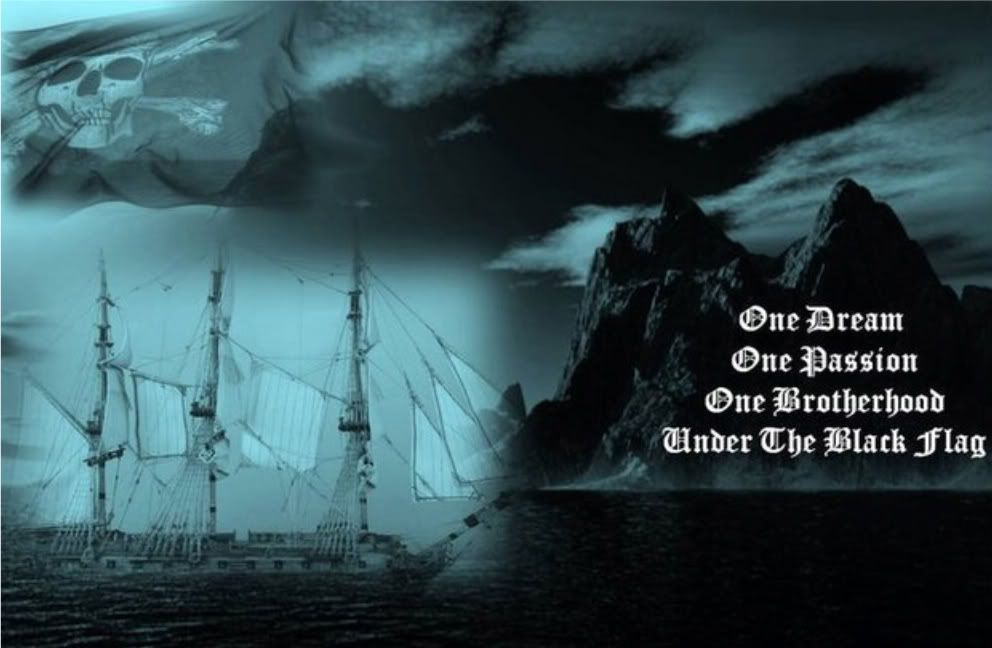Piracy and Slavery
history, Piracy and Slavery 1:45 π.μ.
 |
| A group of pirates, among them Gibbs and Wansley, burying their treasure on Barron Island. This engraving is unusual for the rare depiction of an African-American pirate, although in fact there were many of them. |
The Golden Age of piracy was also the hey-day of the Atlantic slave trade. The relationship between piracy and the slave trade is complex and ambiguous. Some pirates participated in the slave trade and shared their contemporaries' attitude to Africans as commodities for exchange.
however, not all pirates participated in the slave trade. Indeed large numbers of pirates were ex-slaves; there was a much higher proportion of blacks on pirate ships than on merchant or naval vessels, and only rarely did the observers who noted their presence refer to them as 'slaves'. Most of these black pirates would have been runaway slaves, either joining with the pirates on the course of the voyage from Africa, deserting from the plantation, or sent as slaves to work on board ship. Some may have been free men, like the "free Negro" seaman from Deptford who in 1721 led "a Mutiney that we had too many Officers, and that the work was too hard, and what not." Seafaring in general offered more autonomy to blacks than life on the plantation, but piracy in particular, could - although it was a risk - offer one of the few chances at freedom for an African in the 18th century Atlantic.
For example, a quarter of the two-hundred strong crew of Captain Bellamy's ship the Whydah were black, and eyewitness accounts of the sinking of the pirate vessel off Wellfleet, Massachusetts in 1717 report that many of the corpses washed up were black. Pirate historian Kenneth Kinkor argues that although the Whydah was originally a slave ship, the blacks on board at the time of the sinking were members of the crew, not slaves. Partially because pirates, along with other tars, "entertain'd so contemptible a Notion of Landsmen," a black man who knew the ropes was more likely to win respect than a landsman who didn't. Kinkor notes: "Pirates judged Africans more on the basis of their language and sailing skills - in other words, on their level of cultural attainment - than on their race."
Black pirates would often lead the boarding party to capture a prize. The pirate ship the Morning Star had "a Negro Cook doubly arm'd" in the boarding party and more than half of Edward Condent's boarding party on the Dragon were black. Some black pirates became quartermasters or captains. For example, in 1699, when Captain Kidd dropped anchor in New York, two sloops were there to meet him, one of whose "Mate was a little black man... who, as it was said, had been formerly Captain Kidd's Quarter Master."
In the 17th century blacks found on pirate ships were not tried with the other pirates because it was assumed they were slaves, but by the 18th century they were being executed alongside their white 'brethren'. Still the most likely fate for a black pirate, if he was captured, was to be sold into slavery, whether he was a freeman or not. When Blackbeard was captured by the Royal Navy in 1718, five of his eighteen man crew were black and according to the Governor's Council of Virginia the five blacks were "equally concerned with the rest of the Crew in the same Acts of Piracy." A "resolute Fellow, a Negroe" named Caesar was caught just as he was about to blow up the whole ship rather than be captured and most likely returned to slavery.
In 1715 the ruling Council of the Colony of Virginia worried about the connections between the "Ravage of Pyrates" and "an Insurrection of the Negroes." They were right to be concerned. By 1716 the slaves of Antigua had grown "very impudent and insulting" and reportedly many of them "went off to join those pirates who did not seem too concerned about color differences." These connections were trans-Atlantic; stretching from the heart of Empire in London, to the slave colonies in the Americas and the 'Slave Coast' of Africa. In the early 1720s a gang of pirates settled in West Africa, joining and intermixing with the Kru - a West African people from what is now Sierra Leone and Liberia, renowned both for their seamanship in their long canoes and when enslaved for their leadership of slave revolts. The pirates were probably members of Bartholomew Roberts' crew who had fled into the woods when attacked by the Navy in 1722. This alliance is not so unusual when you consider that of the 157 men who didn't escape and were either captured or killed on board Roberts' ship, 45 of them were black - probably neither slaves nor pirates but "Black saylors, commonly known by the name of gremetoes" - independent African mariners primarily from the Sierra Leone region, who would have joined the pirates "for a small demand of wages."
We can see the way these connections were spread and the how the pirates' legacy was disseminated even after their defeat in the fate of some of those captured on Roberts' pirate ship. "Negroes" from his crew grew mutinous over the poor conditions and "thin Commons" they received from the Navy. "Many of them" had "lived a long time" in the "pyratical Way", which obviously for them had meant better food and more freedom.(28)












